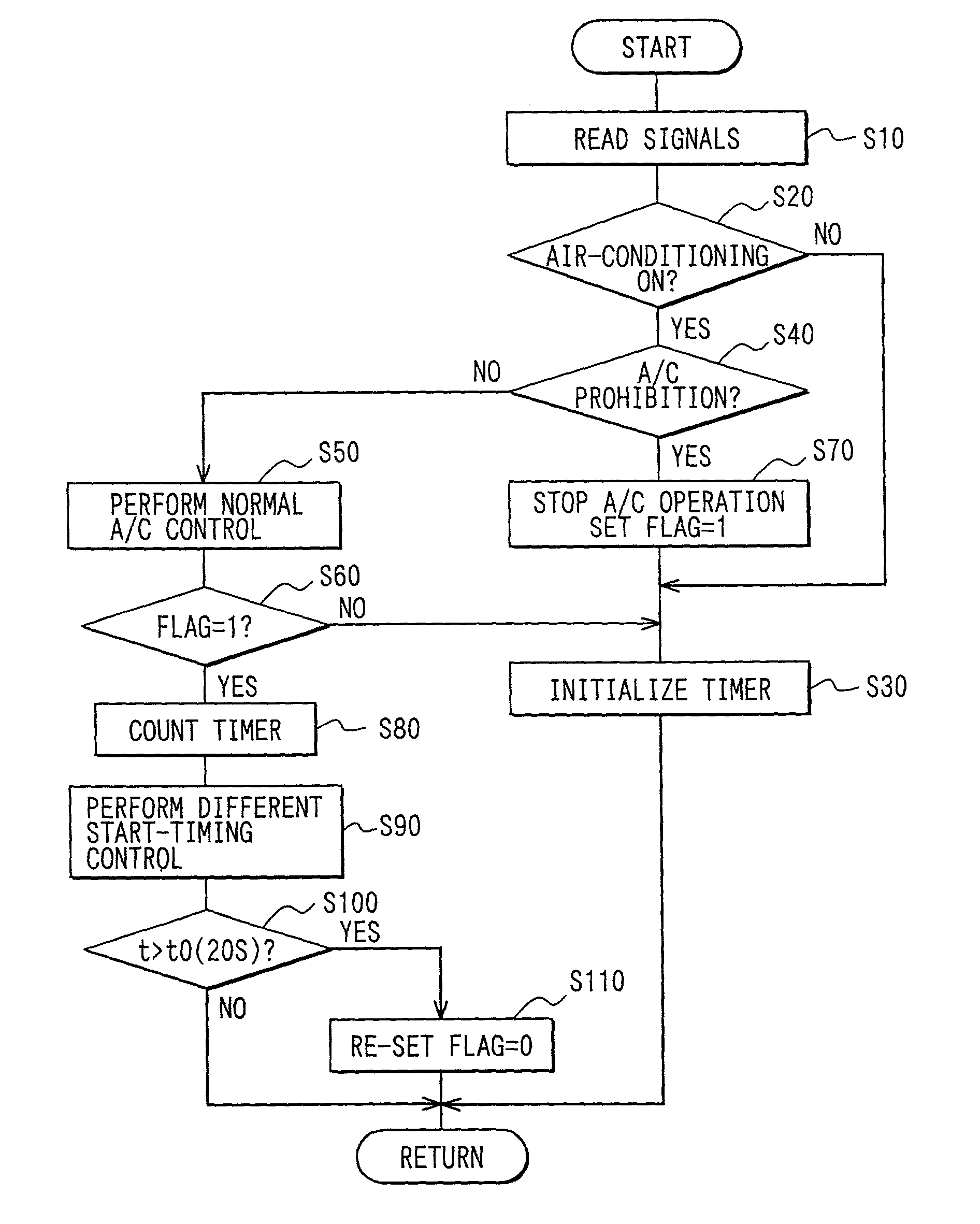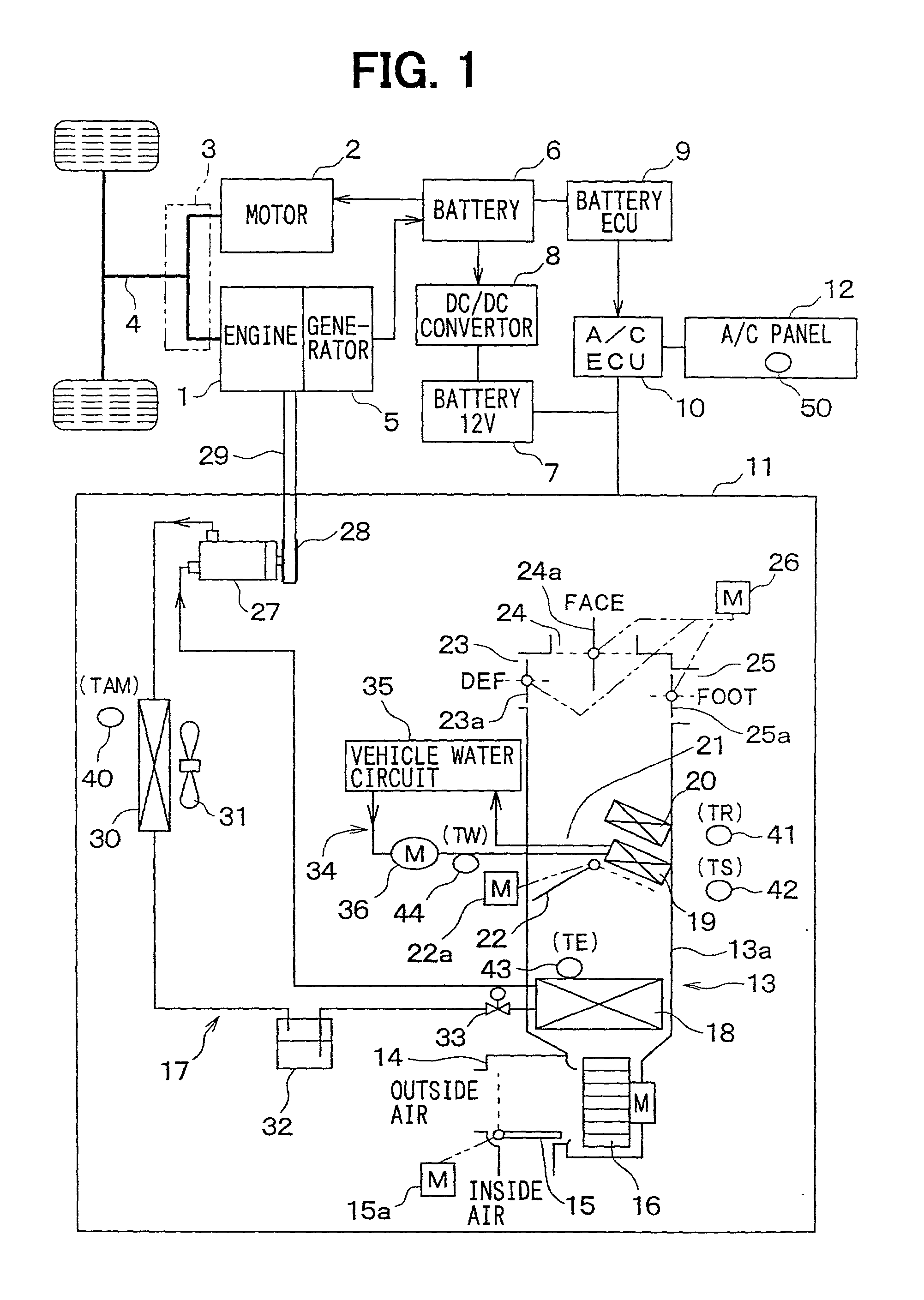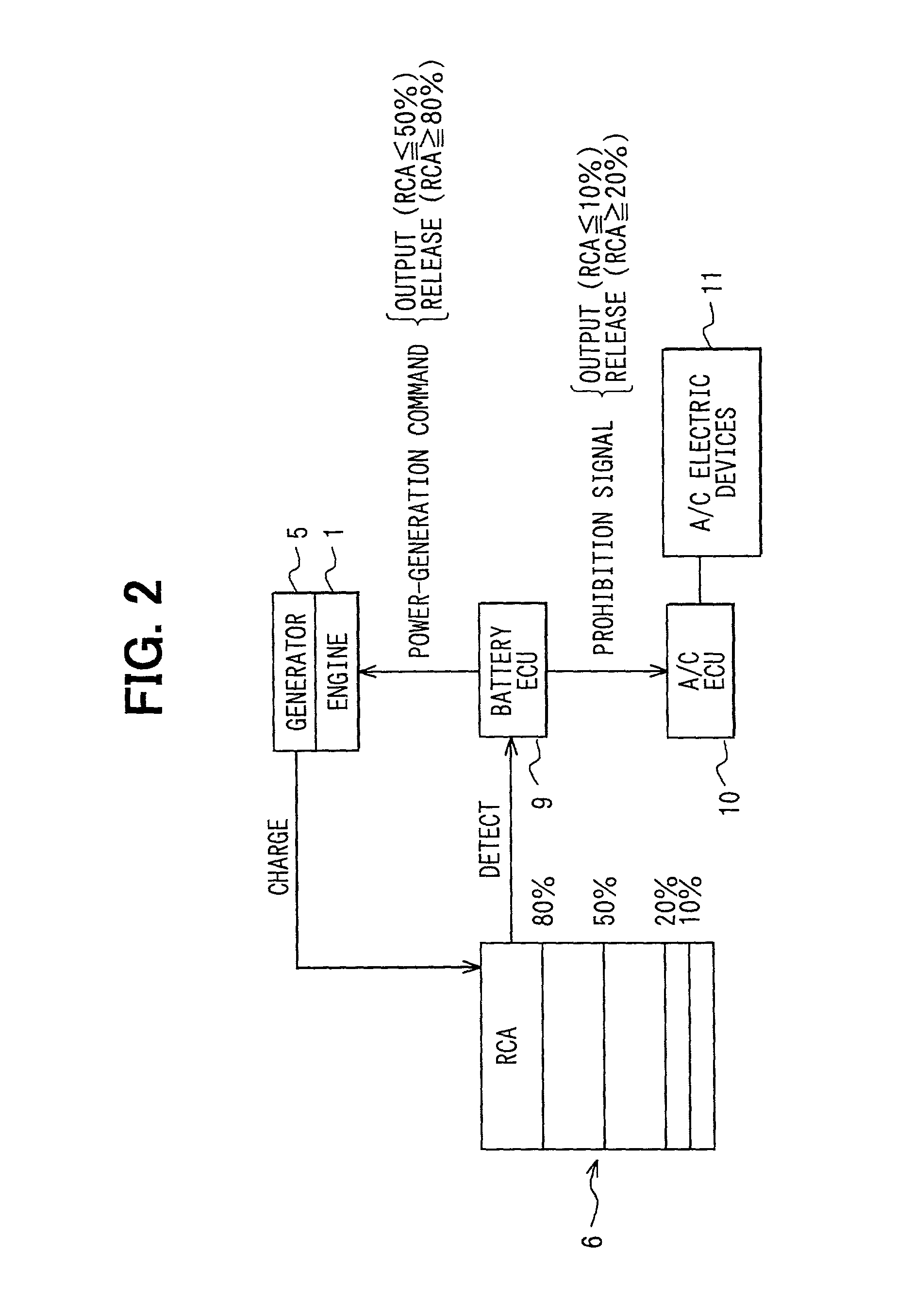Charging control system for air conditioner and battery
a technology for controlling system and battery, which is applied in the direction of secondary cell servicing/maintenance, safety/protection circuit, transportation and packaging, etc., can solve the problems of not specifically revealing a method for electrically controlling the other various electrical devices, affecting the rechargeable amount of the battery, and not rapidly increasing the power consumption of the plural air-conditioning electrical devices
- Summary
- Abstract
- Description
- Claims
- Application Information
AI Technical Summary
Benefits of technology
Problems solved by technology
Method used
Image
Examples
first embodiment
[0034] In the first embodiment, the sensor group, for performing an air-conditioning automatic control, includes an outside air temperature sensor 40, an inside air temperature sensor 41, a solar radiation sensor 42, an evaporator air temperature sensor (evaporator cooling-degree detection device) 43, a water temperature sensor 44 and the like. The outside air temperature sensor 40 detects an outside air temperature TAM outside the passenger compartment, and the inside air temperature sensor 41 detects an air temperature (inside air temperature) TR in the passenger compartment. The solar radiation sensor 42 detects an amount (solar radiation amount) TS of sunlight radiated into the passenger compartment. The evaporator air temperature sensor 43 detects a temperature TE of air blown from the evaporator 18, and the water temperature sensor 44 detects a temperature TW of the hot water circulated to the heater core 19.
[0035] On the air-conditioning operation panel 12, operation members ...
second embodiment
[0056] the present invention will be described with reference to FIGS. 5A-5F. In the second embodiment, when the output of the air-conditioning prohibition signal is stopped, the plural air-conditioning electrical devices are started at the same time. At this time, each of the air-conditioning electrical devices are is started by a small operation level. Thereafter, the operation levels of the air-conditioning electrical devices are gradually increased toward the necessary air-conditioning levels required from the air-conditioning function in the passenger compartment, respectively.
[0057] Specific control operations according to the second embodiment, shown in FIGS. 5A-5F, are performed at step S90 shown in FIG. 3. In the second embodiment, FIG. 5A shows a control operation of the front interior blower 16, FIG. 5B shows a control operation of the rear interior blower, FIG. 5C shows a control operation of the compressor 27, FIG. 5D shows a control operation of the exterior blower, FI...
third embodiment
[0065] Thus, in the third embodiment, the different start-timing control and the operation level control are combined to each other. In the different start-timing control, the plural air-conditioning electrical devices are started at different start times. In the operation level control, after the plural air-conditioning electrical devices are started by the small operation levels, respectively, the operation levels of the plural air-conditioning electrical devices are gradually increased toward the necessary levels, respectively. Therefore, the power consumption of the air-conditioning electrical devices can be restricted from being rapidly increased after the output of the air-conditioning prohibition signal is stopped.
PUM
 Login to View More
Login to View More Abstract
Description
Claims
Application Information
 Login to View More
Login to View More - R&D
- Intellectual Property
- Life Sciences
- Materials
- Tech Scout
- Unparalleled Data Quality
- Higher Quality Content
- 60% Fewer Hallucinations
Browse by: Latest US Patents, China's latest patents, Technical Efficacy Thesaurus, Application Domain, Technology Topic, Popular Technical Reports.
© 2025 PatSnap. All rights reserved.Legal|Privacy policy|Modern Slavery Act Transparency Statement|Sitemap|About US| Contact US: help@patsnap.com



